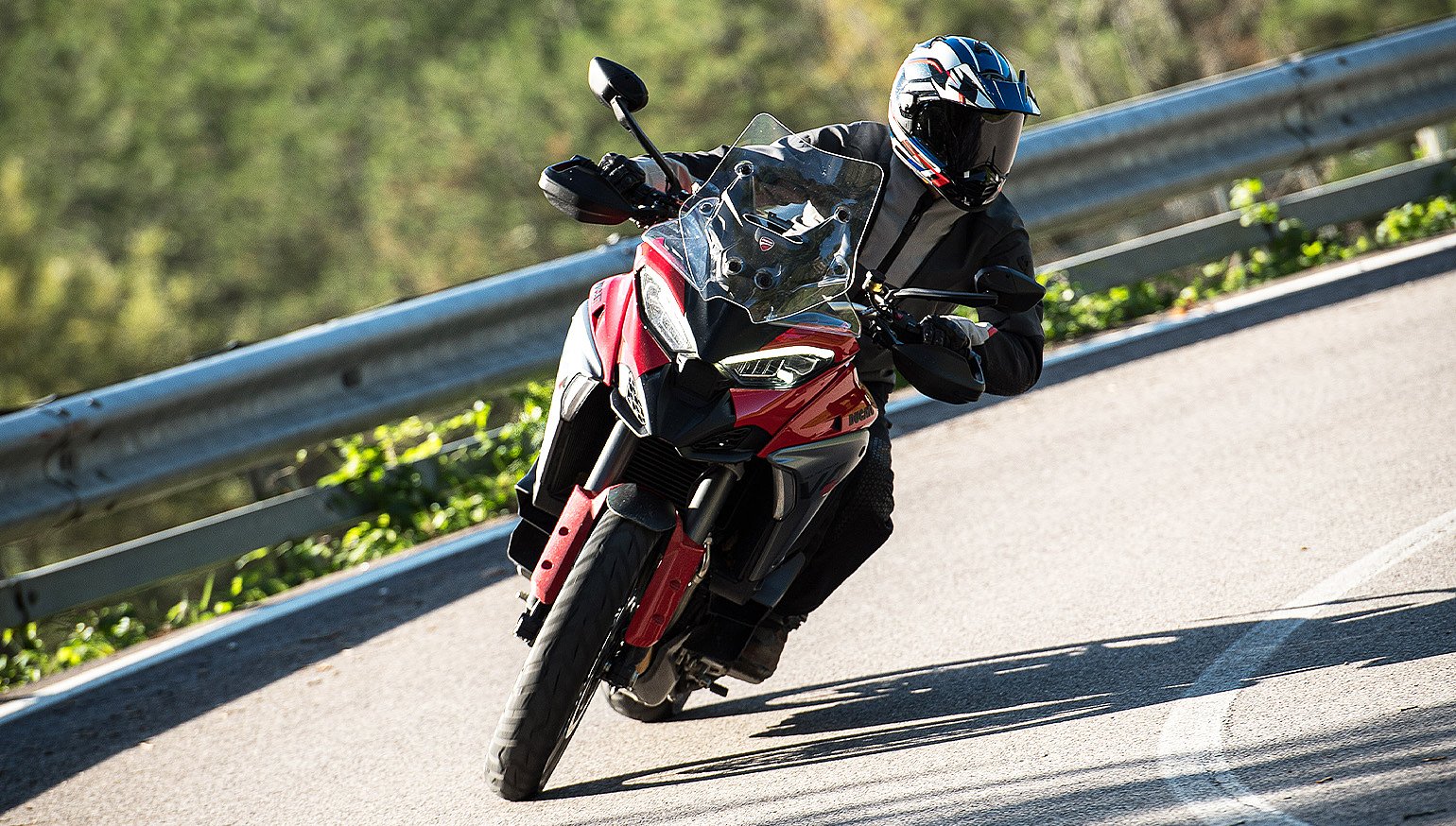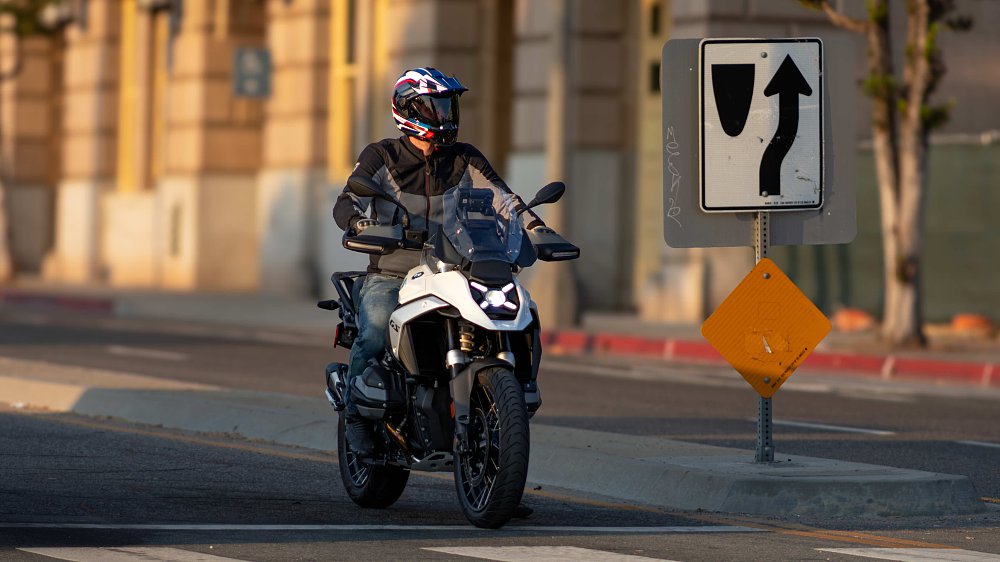When Ducati uncovered the 2025 Multistrada V4 S, the little voice in my head asked, “Again? Already? Why?”
The Italian marque introduced the V4-powered Multi in 2021, but to me, it felt like yesterday. Maybe that’s because new mutations of the Multistrada debuted each year since. In 2022, it was the sporty Pikes Peak edition. Then the dirt-seeking Rally arrived a year later, followed by the track-ready RS and fully optioned Grand Tour in 2024. Multistrada fatigue had officially set in. That’s saying something, considering my affinity for the model up to that point.
I’ll confess. I have a soft spot for the MTS. Particularly, in its V4 era. The second press launch I ever attended was for the 2021 Multistrada V4 S. The Pikes Peak variant topped my shortlist of favorite bikes the very next year. So, when Lance asked if I’d attend the new Multistrada’s global launch in Gubbio, Italy, the little voice in my head said, “What’s the point?” But, my mouth said, “Abso-friggin-lutely.” That ambivalence colored much of my time with the refreshed Multi.
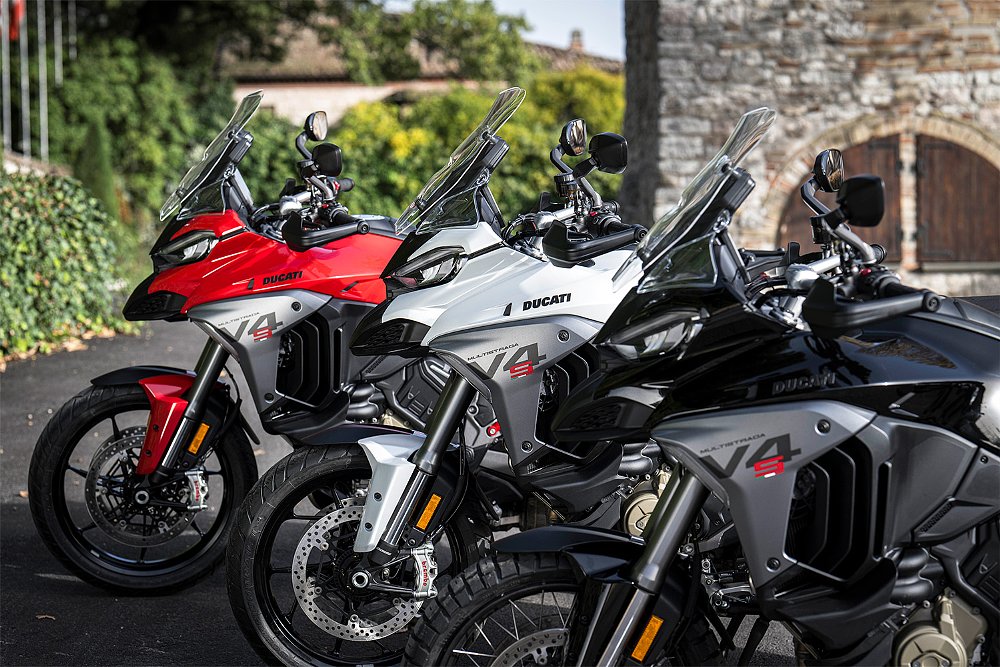
Multi bene
“From the outside, it may look like the same bike,” admits Ducati’s Multistrada Product Sponsor, Andrea Rossi. He delivers this message to a crowded conference room of moto journalists. It’s what everyone’s thinking. Rossi’s the only one who comes out and says it.
“But, let me assure you,” he continues, “that couldn’t be further from the truth.”
It’s difficult to fault someone for making that assumption. The new Multistrada is the spitting image of its predecessor. Its silhouette, stance, and proportions remain unchanged. Unless you squint, you probably won’t notice the new wheel design or the updated exhaust system. The remaining changes boil down to minor paint revisions, which Ducati applies to the front fairing, frame, swingarm, and radiator shrouds.
The visual modifications may be underwhelming but the technological upgrades are plentiful. Take the model’s 1,158 cc Granturismo engine, for instance. The V4 now complies with Euro 5+ emissions standards, yet it still produces 170 horsepower and 92 foot-pounds of torque. The only difference being that both peak power and peak torque now arrive 250 rpm later, at 10,750 rpm and 9,000 rpm, respectively.
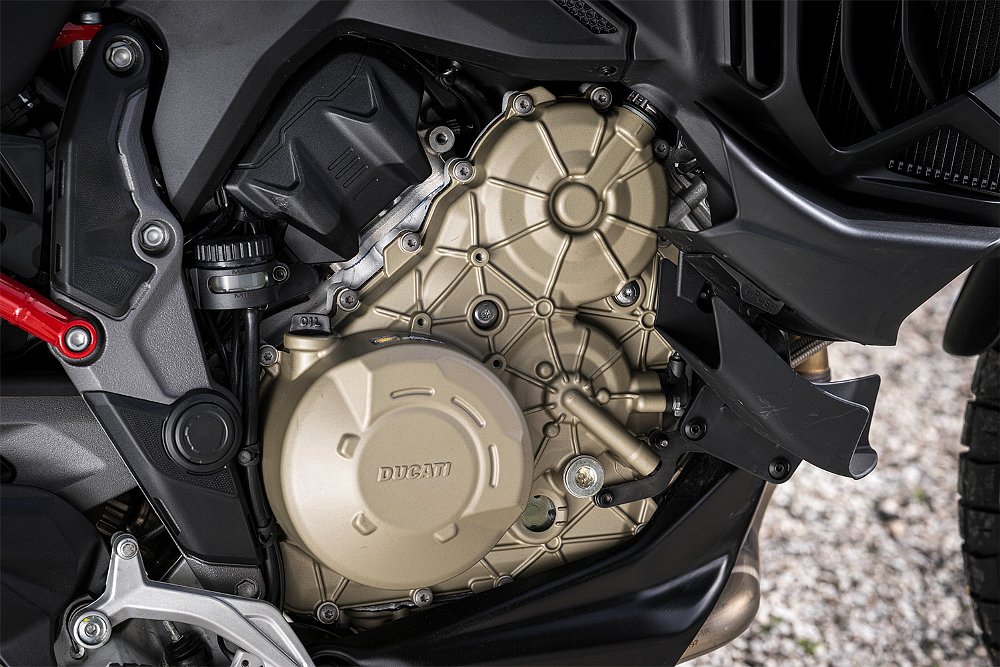
Ducati showers the chassis with even more attention. A new position sensor in the front fork enhances the semi-active suspension’s bump detection, which the system then uses to adapt the rear shock’s damping characteristics to changing terrain. Per Ducati, that all happens in the split second between your front wheel and rear wheel hitting the same bump.
The shock also features Ducati’s new Automatic Lowering Device (ALD), which functions similarly to Harley-Davidson’s Adaptive Ride Height technology. Once the Multistrada slows to six miles per hour, ALD drops the seat by 0.6 to 1.2 inches (depending on the current load) and returns the saddle to its original height when the vehicle exceeds 30 mph.
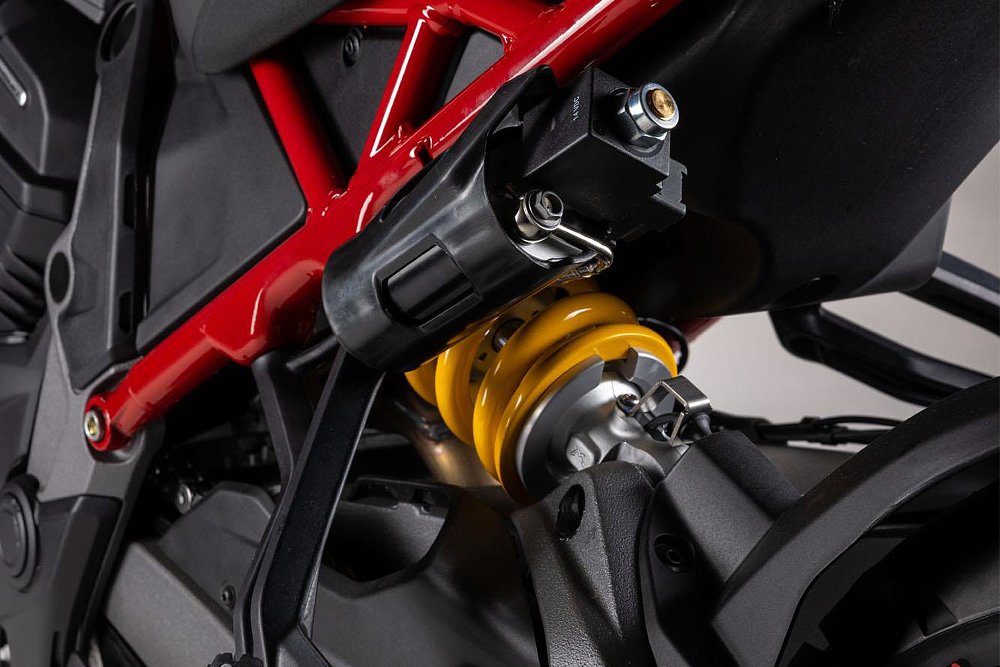
The Ducati Skyhook suspension also boasts a self-leveling function that automatically adjusts preload settings and damping schedules to different rider, luggage, and passenger configurations. Those who want a bit more control over the situation, fret not. A dedicated button now allows users to quickly switch between the Multi’s five pre-set suspension modes (Auto, Low Grip, Comfort, Off-Road, and Dynamic).

The V4 S is still the poster child for Ducati’s high-tech regime. That means radar-informed rider aids like Adaptive Cruise Control (ACC) and Blind Spot Detection (BSD) return, but Forward Collision Warning (FCW) completes the suite in 2025. It’s a similar story with cornering ABS, lean-sensitive traction control, and lift control, which now fall under the governance of Ducati Vehicle Observer (DVO).

Let Ducati tell it and DVO is nothing short of digital witchcraft. The new function is a product of the brand’s immensely successful MotoGP program, an operation that’s benefited from extensive data acquisition in recent years. Utilizing that data, DVO simulates “the input of 70 sensors” to estimate “the ground forces acting on the motorcycle and the loads it can bear in various riding conditions.” If you ask me, that’s a really long way of saying “algorithm.”
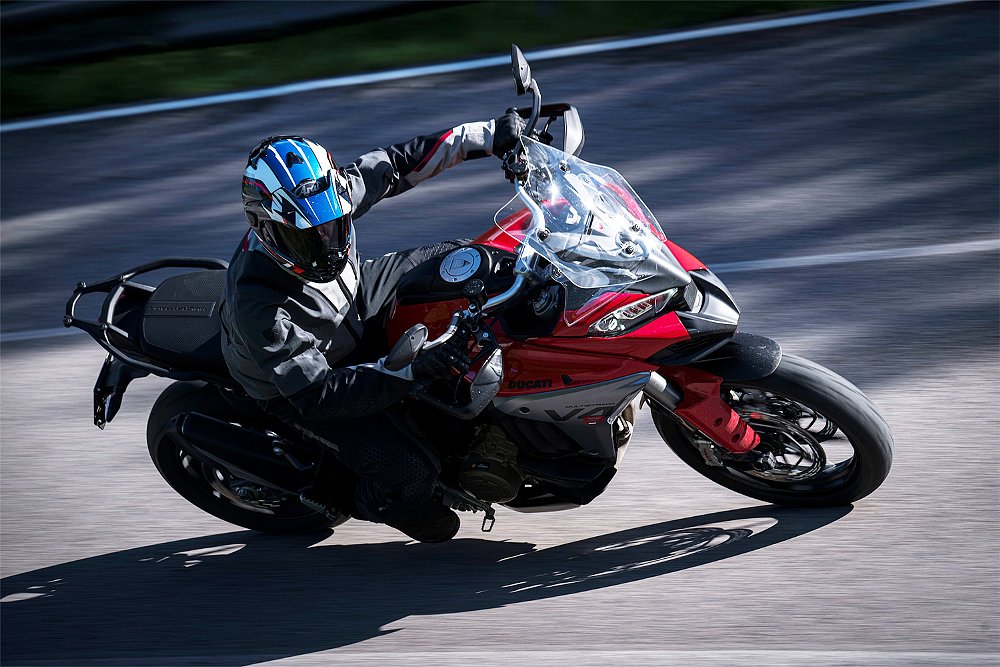
Seemingly, no detail escaped the eye of Ducati. For instance, the Bologna engineers went as far as to shift the swingarm pivot point up by a single millimeter. That’s right, 1 mm. If metric isn’t your first language, 1 mm roughly translates to 0.04 inches. The voice in my head muttered, “Talk about splitting hairs.” Still, Ducati reports that the slight revision improves the model’s anti-squat under acceleration. A change that may seem more significant is the Multi’s combined braking, which is only active when using the rear brake pedal in Urban, Touring, and Wet ride modes.
By the end of the presentation, it was clear that the V4 S underwent a thorough reworking. What wasn’t clear was whether this raft of refinements would make a difference on the road. As luck would have it, the scenic backroads and trails around Gubbio beckoned me to find out.
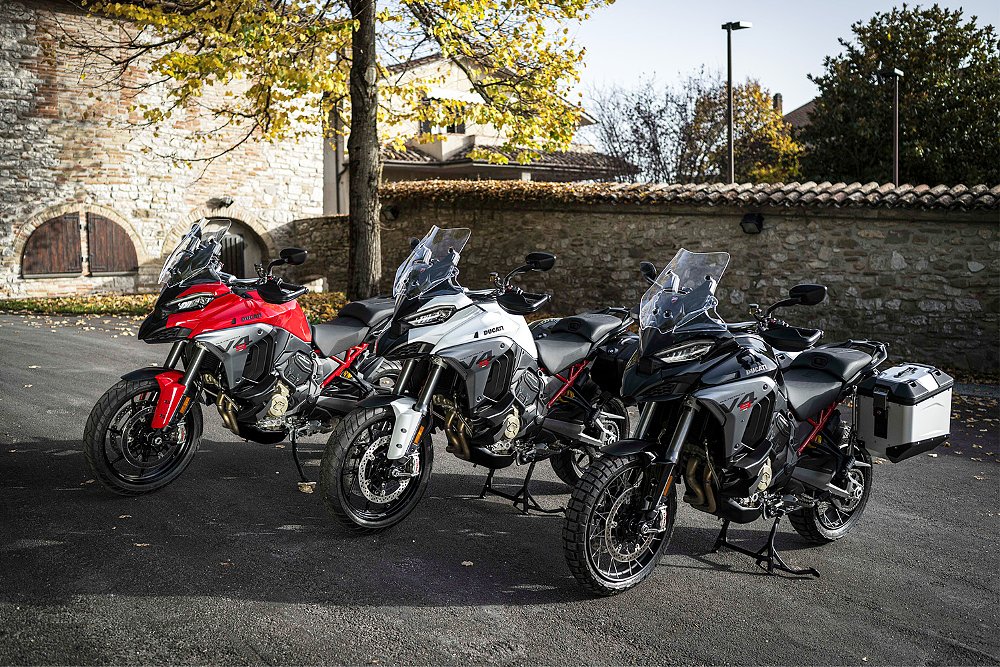
Gimme a lift
House martins twitter in the trees. The smell of espresso and exhaust fumes fill the air. Prosciutto and formaggio are on the breakfast spread. This is morning time in Italy. Sun rays poke through he canopy overhead. Twenty brand-new Multistradas idle in the hotel’s porte-cochere, their percussive exhausts reverberating off the building’s stone facade.
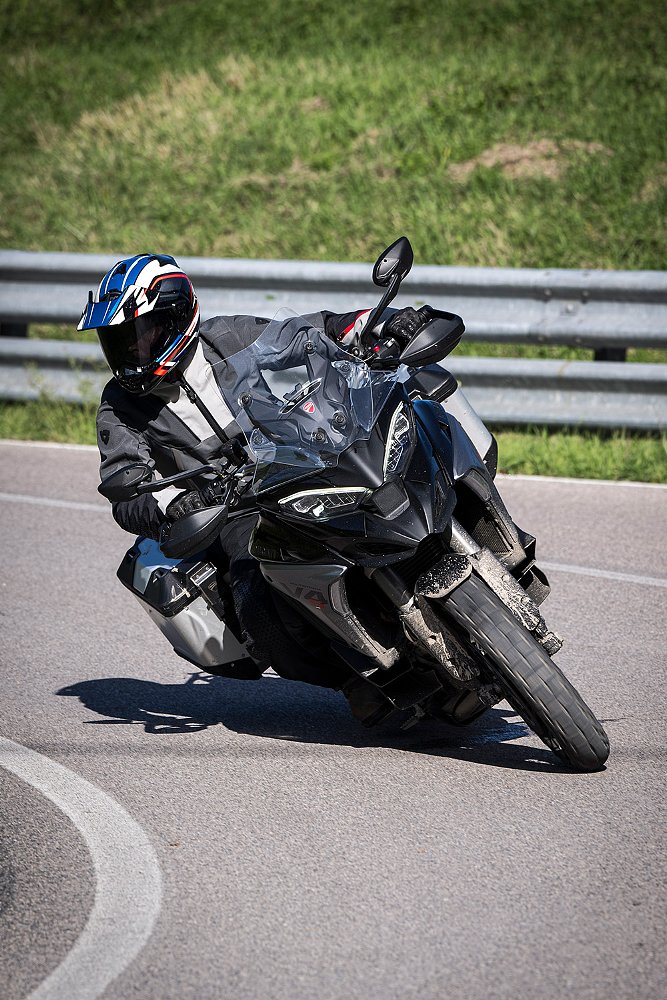
I claim my steed and reacquaint myself with its size. After all, the flagship adventurer tipped Ducati's scales at 511 pounds — and that’s with its 5.8-gallon fuel tank completely empty. You can imagine when it’s full. Mamma mia. Before I ever throw a leg over the massive Multi, a Ducati representative demonstrates how to activate the Automatic Lowering Device. A long press on the dedicated suspension button and the rear end sinks like a custom chopper on air bags.
I throw a leg over, and to my delight, both feet are firmly planted on the ground. There’s even a slight bend in my knees. With a 32-inch inseam, I don’t need ALD. Yet, I left it on nearly all day. The device only lowers the seat by an inch or so, but I can’t measure how much it heightened my confidence. I expect shorter riders to find ALD even more beneficial.
One of its best features is just how unintrusive it is. Not once did I feel the mechanism actively lowering or raising the seat, even when I referenced the speedometer for the actuation cue at six mph and 30 mph. Thanks to that smooth operation, I didn’t have to contend with additional inputs or forces acting on the bike. I simply rode it naturally and reaped the rewards of firm footing at a stop. Ironically, I noticed ALD most in its absence.
Despite none of the Multistrada’s updates specifically improving the model’s off-road prowess, Ducati wanted to prove it could still trample up a dirt road. In such situations, maximum ground clearance is desirable, so our ride leaders instructed the group to switch off ALD at the trail head. That was sound advice for crawling up ruts and blasting through rock gardens, which the adventure bike did with aplomb.
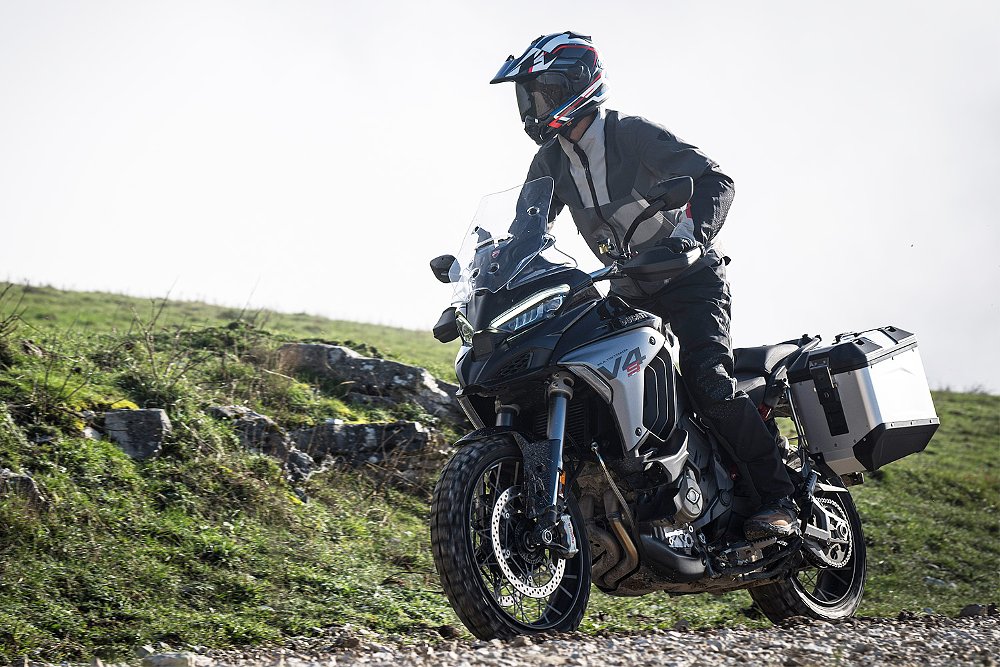
As long as I stayed in motion, ALD remained a distant memory. That all changed when the trail switchbacked up the mountainside, with deep sand and rocks at each sharp, uphill hairpin. In several spots, I lost momentum and placed my feet down to avoid a tip. Each time I did only one of my boots found terra firma on the sloped terrain. I duck-walked my way out each instance but I missed ALD more than ever. It’s no wonder I switched it back on as soon as the Pirellis touched the tarmac again.
Spicy meatball
Ducati only mildly updated its 1,158 cc V4 for 2025 but it's still the life of the Multistrada party. Yes, it can peel your lids back with 170 peak horsepower. At the same time, it’s quite tractable in nearly all situations. That’s especially true in the Urban, Enduro, and Wet modes, which limit output to 114 ponies. Only in the Touring and Sport modes does the miracle mill perform at its full potential. Even then, it’s never intimidating. A rapid tug on the throttle results in rapid acceleration, but it’s more urgent than overwhelming.

Vibrations are nearly nil, with the Granturismo running smooth practically everywhere in the rev range. It’s just as flexible too, allowing riders to lumber out of corners a gear too high or flog it up to the redline. There’s just one problem. Well, two really. V4s are notoriously thirsty and hot-running. Ducati hopes rear-cylinder deactivation mitigates both. While I can’t to speak to Ducati’s fuel consumption claims after a single 120-mile ride, I do know that engine heat never became an issue. I couldn’t say the same when I tested the 2021 Multistrada V4 S.
Changes to the chassis feel just as subtle. The Multi has never suffered in the handling department. You could sneeze on the handlebar, and boom, the bike’s on the side of the tires. It may classify as a heavyweight but it's as agile as a welterweight. That doesn’t change this time around, either. Cycling through different ride and suspension modes softens or stiffens the chassis accordingly, but there’s little left to desire with its cornering performance. Maybe that’s why it was so difficult to detect the benefits of the new swingarm position.
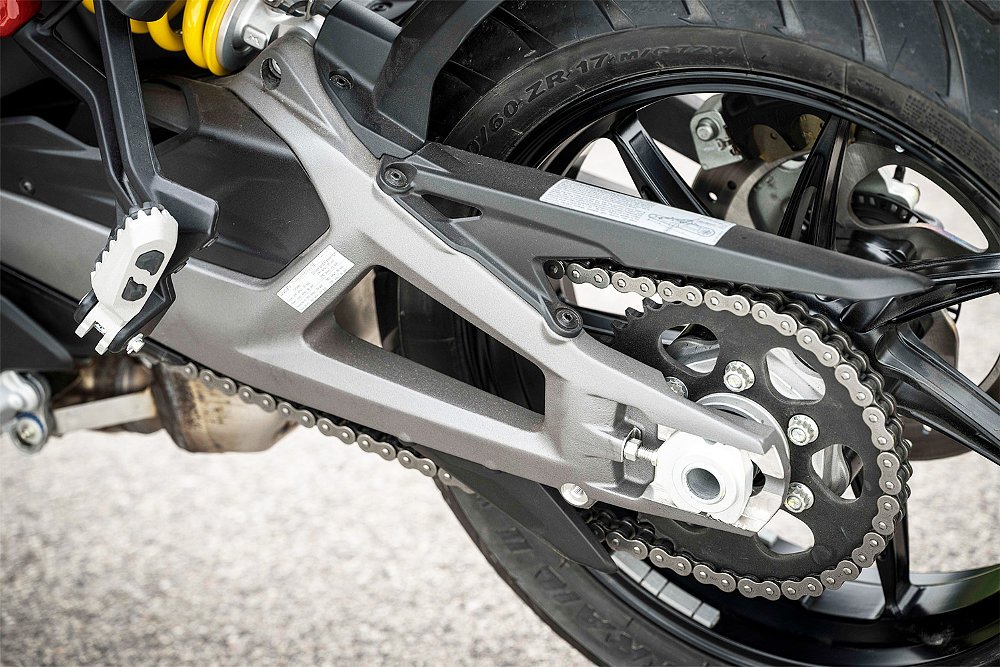
Setting expectations is important. Ducati reports that the new swingarm pivot point reduces squat but don’t anticipate equal results in all scenarios. In Urban, Touring, and Wet ride modes, the rear end still compresses under heavy acceleration. The MTS squatted least in Sport mode and while riding two-up. I can compare between the current model’s various modes, but without testing the Multi back-to-back with its predecessor, it’s impossible to quantify the year-to-year change. In other words, I can’t refute Ducati’s claims but can’t confirm them, either.
Arrivederci
During the press presentation, Ducati Product Communication Specialist Edoardo Licciardello identified the Multistrada as a “bike that [Ducati] used to introduce a lot of technological innovations.” The little voice in my head murmured, “Yeah, I’ll say.” Variable valve technology, Skyhook semi-active suspension, and radar-guided adaptive cruise control just to name a few. That theme continues with the next-generation Multistrada.
The new crop of tech gizmos includes ALD, FCW, and DVO. Rear-cylinder deactivation, linked braking, and switchable suspension modes round out the revisions. Are the additions as revolutionary as Ducati wants to believe. No, not really. But that doesn’t mean they don’t make a difference. ALD and the dedicated suspension button are tangible upgrades, while features like DVO and rear-cylinder deactivation work their magic in the background.
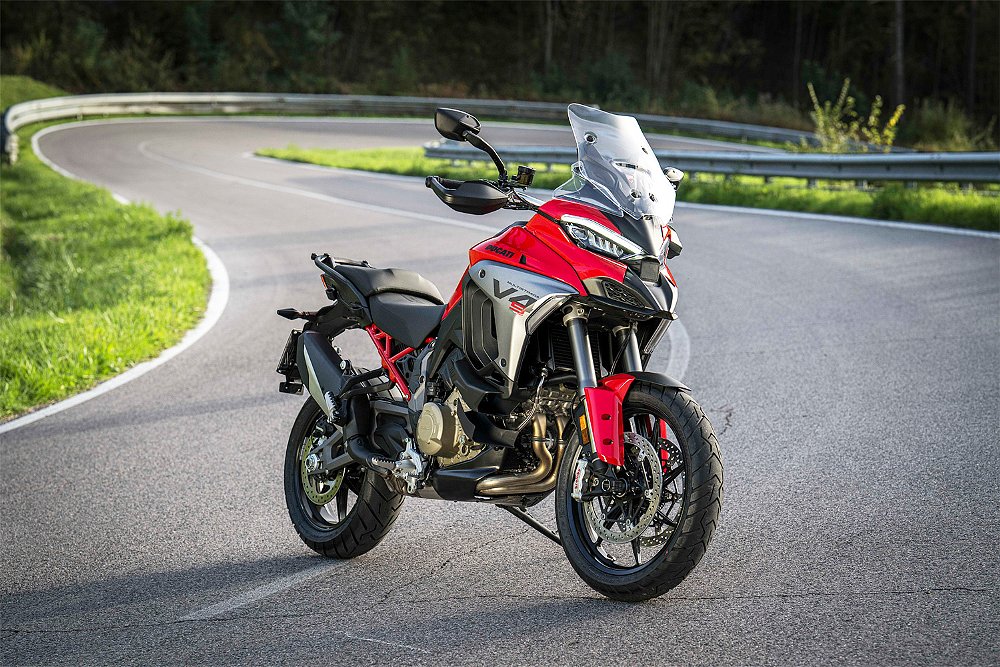
Ducati spends most of its resources calling attention to the Multistrada’s new features, and understandably so. However, what the brand forgets to emphasize is just how potent the platform already is. That doesn’t change in 2025, it just adds a few more arrows in its quiver. All for a $1,100 markup.
Starting at $28,305, the Multistrada V4 S is a product of Ducati’s technological renaissance. That’s why the brand regularly updates it. That’s why its innovations will continue trickling down to the rest of the Multistrada lineup. Only after realizing that did the little voice in my head conclude, “OK, that’s why.”
| 2025 Ducati Multistrada V4 S | |
|---|---|
| Price (MSRP) | $28,305 |
| Engine | 1,158 cc, liquid-cooled, 16-valve, V-four |
|
Transmission, final drive |
Six-speed, chain |
| Claimed horsepower | 170 @ 10,750 rpm |
| Claimed torque | 92 foot-pounds @ 9,000 rpm |
| Frame | Aluminum monocoque |
| Front suspension | Marzocchi 50 mm fork, adjustable for spring preload, electronically adjustable compression and rebound damping; 6.7 inches of travel |
| Rear suspension | Marzocchi shock, electronically adjustable for spring preload, compression and rebound damping; 7.1 inches of travel |
| Front brake | Brembo Stylema four-piston calipers, 330 mm discs with ABS |
| Rear brake | Brembo two-piston caliper, 265 mm disc with ABS |
| Rake, trail | 24.2 degrees, 4.0 inches |
| Wheelbase | 61.7 inches |
| Seat height | 33.1/33.9 inches |
| Fuel capacity | 5.8 gallons |
| Tires |
Pirelli Scorpion Trail II/Pirelli Scorpion Rally STR 120/70ZR19 front, 170/60ZR17 rear
|
| Claimed weight | 511 pounds (without fuel) |
| Available | Now |
| Warranty | 24 months |
| More info | ducati.com |

 Membership
Membership

